January 08, 2025
Pines with fragrant needles and cool shade welcome you into June’s PlantAsia garden (who’s June, I wonder?) at Denver Botanic Gardens. This is Part 3 of my tour from my visit in late September.
June’s PlantAsia
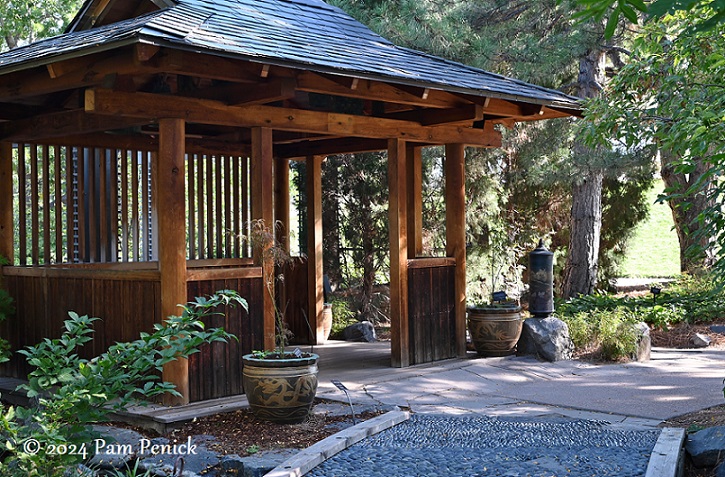
A Chinese pavilion offers a cool spot to rest under the trees.
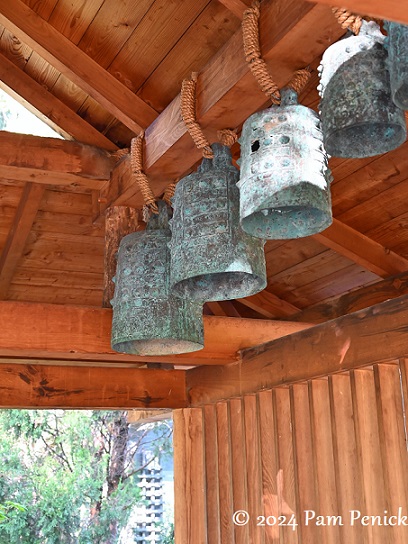
Inside, temple bells hang from a beam. These bells are old, dating from 960-1279 CE, according to a sign.
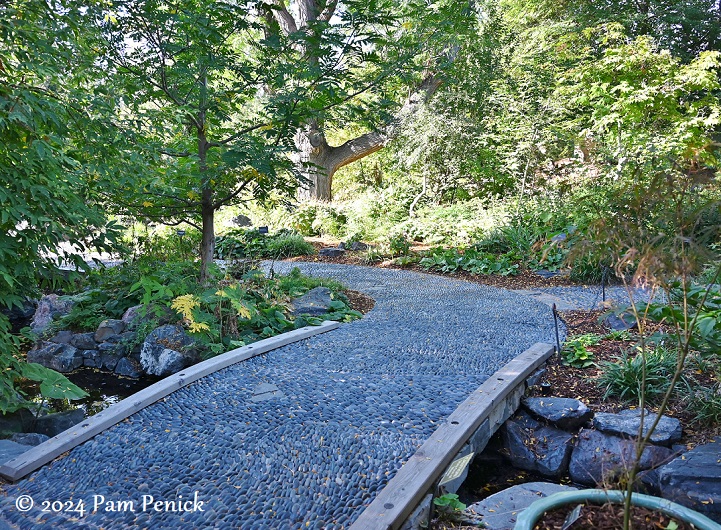
A pebble mosaic path meanders through the garden like an eddying stream.
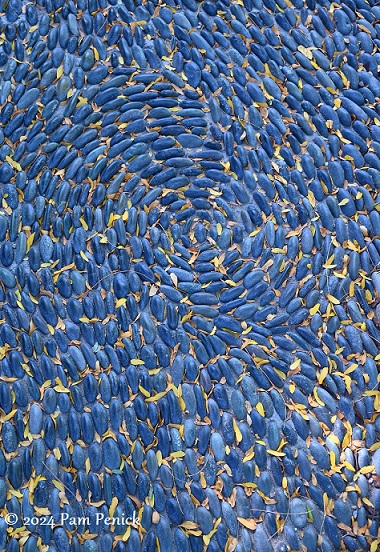
Fallen leaves lay among the swirling pebbles in late September.
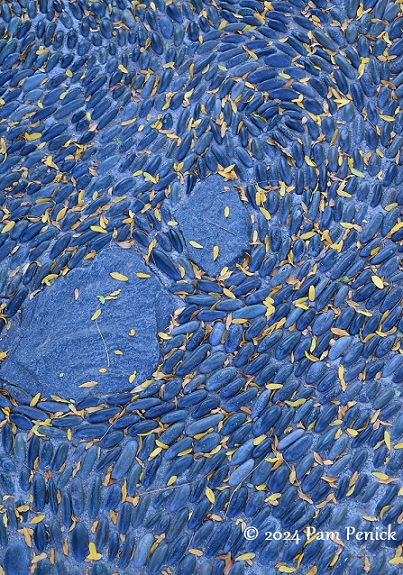
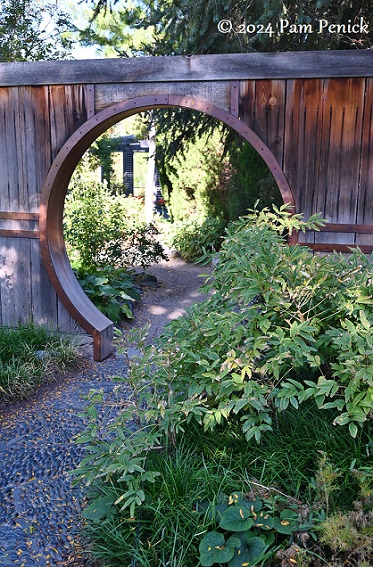
A moon gate beckons you along the path, framing the view ahead.
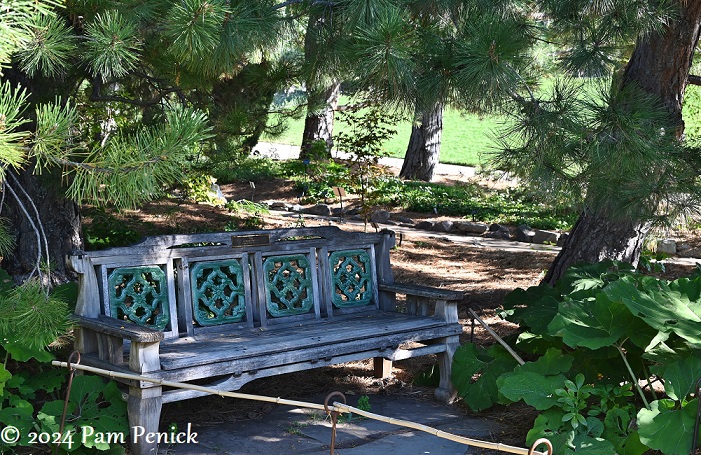
This Chinese bench is one of my favorite spots to sit, tucked under the beautiful pines.
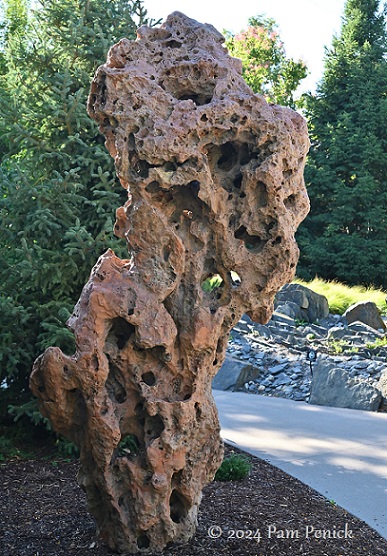
A scholar’s rock stands like a work of sculpture, holding meaning unknown to me.
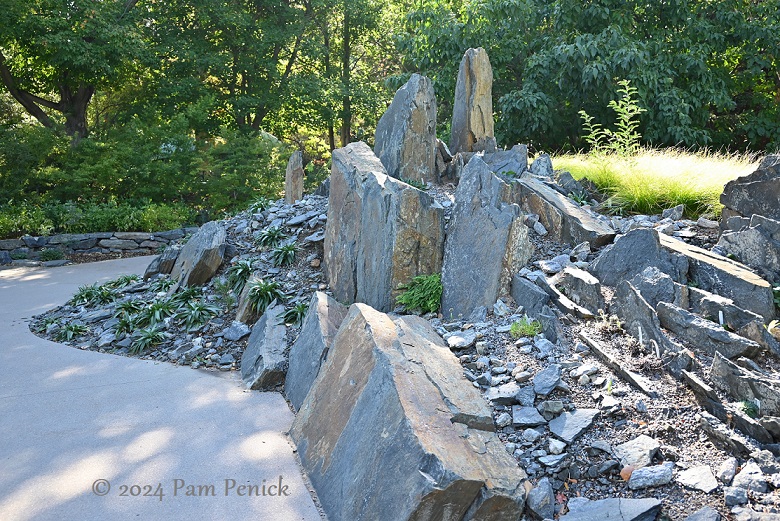
Speaking of rock, a new Himalayan Rock Garden makes a bold statement at one end of the garden. Dramatically constructed of basalt, it offers a spot for Himalayan alpine plants. I can find virtually nothing about it online, unfortunately, or I’d give you more info.
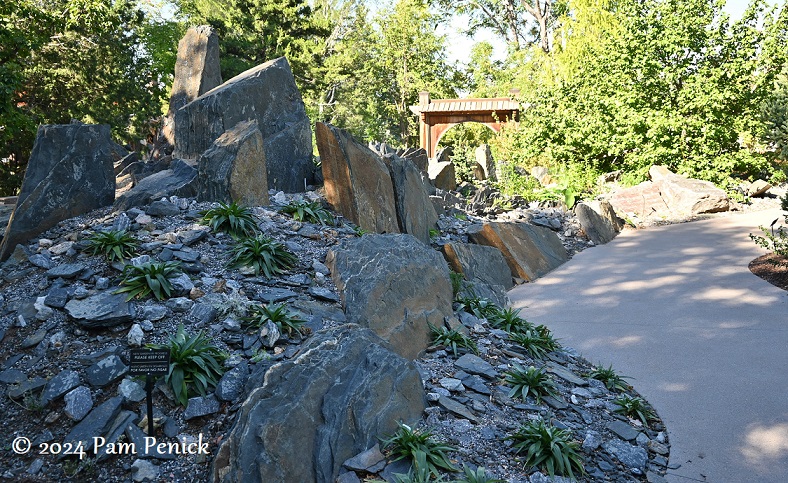
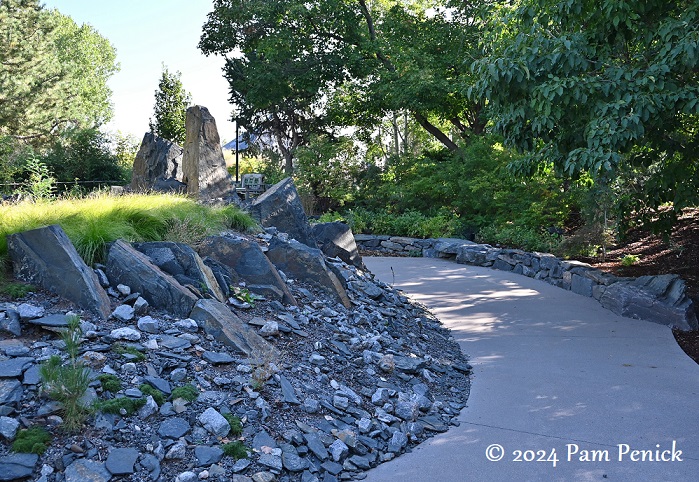
Up top, it looks like a coverlet of sedge is growing. I don’t see many plants in the “scree” below. I should have asked DBG horticulturist Mike Kintgen for details, since I first visited this garden with him before coming back on my own to take photos.
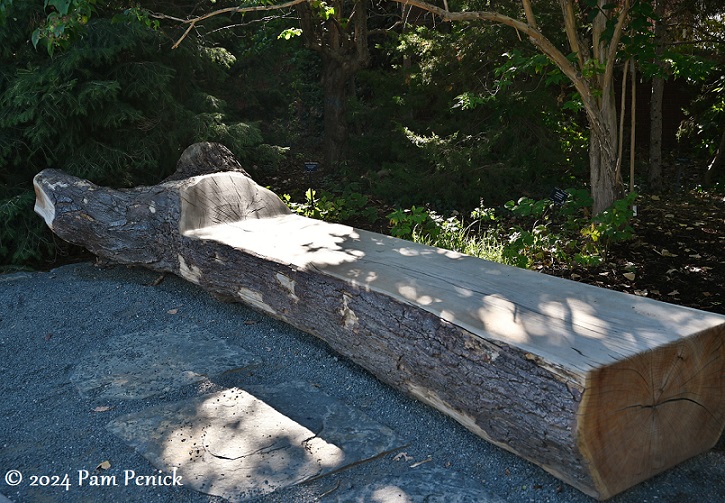
A planed and smoothed tree trunk makes a natural bench in the garden. It’s quite wonderful.
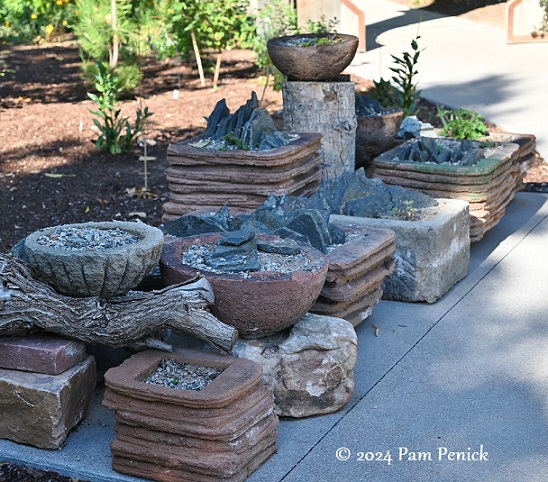
A collection of Domenique Turnbull‘s layered hypertufa planters is arranged with miniature rock “mountains” for more crevice-loving plants, although these were mostly empty — or dormant? I look forward to seeing how this garden is evolving the next time I’m there.
Birds & Bees Walk
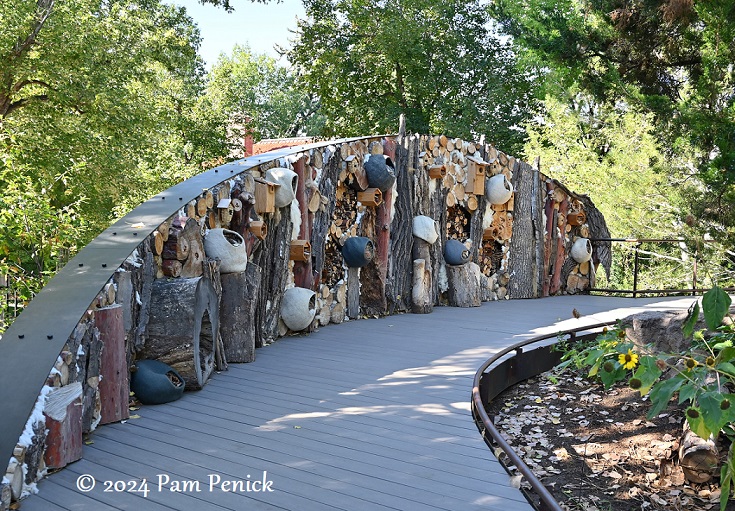
Another new addition is found along the Birds & Bees Walk. A massive steel-framed arch of bee hotels, tree trunks, logs, and other nest-building materials spans the length of a boardwalk.
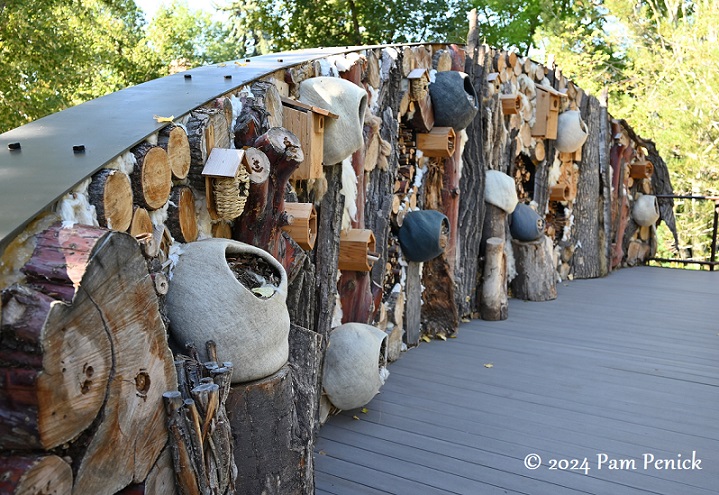
All of these materials will decay, of course, and the staff will have to replace the logs and rebuild from time to time.
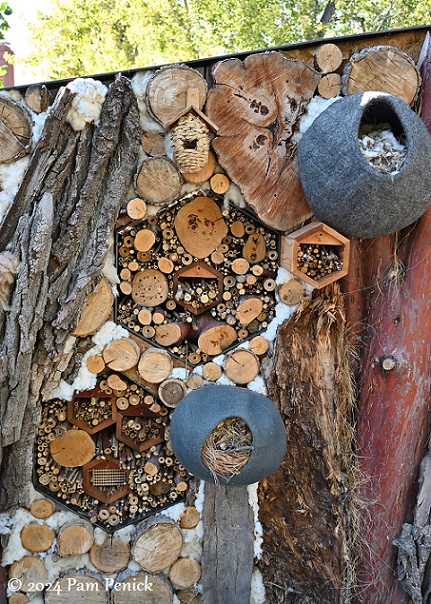
It’s a lot of work, but what a spectacular effect, and it lets visitors see how native bees and other pollinators use hollow stems and holes in wood as safe places for their larvae to grow. Sealed caps of mud show which holes are in use. Birds can pull soft bits of cotton and twigs from felted containers. It’s a Home Depot for birds and bees!
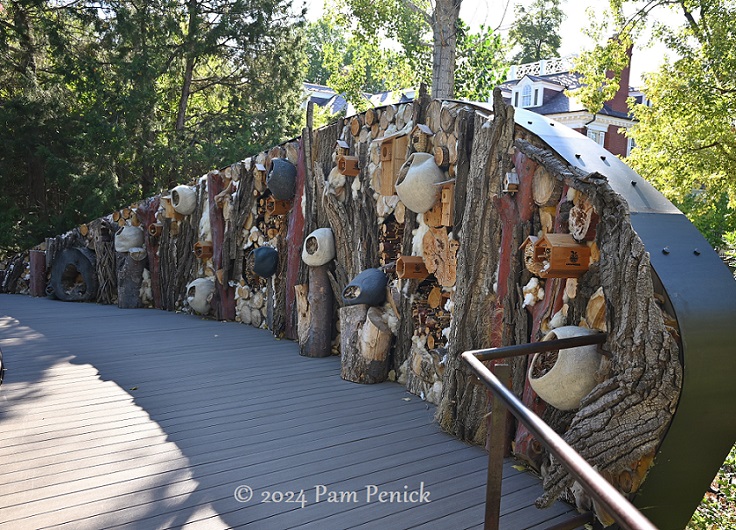
The habitat display also serves as a screen for the ritzy homes that back up to the garden, giving them privacy from garden visitors.
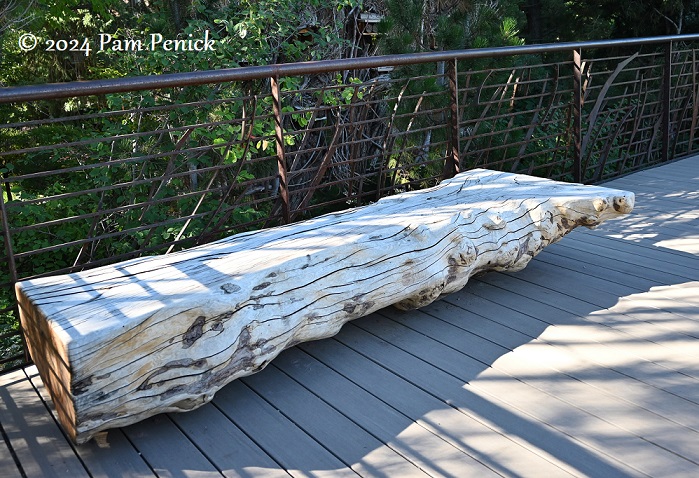
Another log bench reminds me of wave-sculpted driftwood.
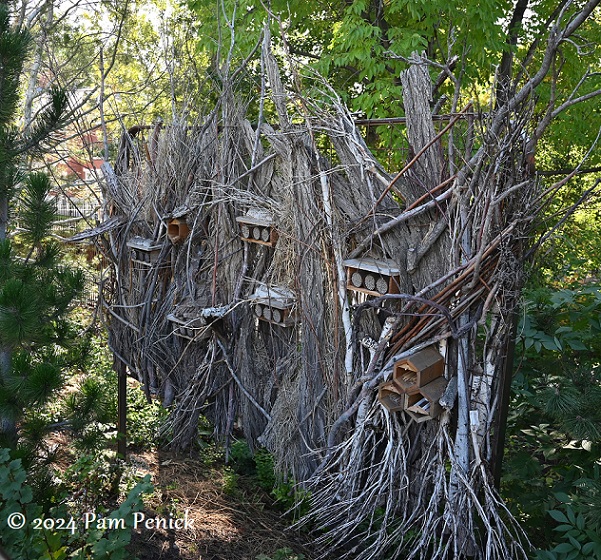
More habitat screens are tucked among the trees along the garden’s perimeter, each one in a different style. This one incorporates sheets of bark, presumably from trees that fell or had to be removed from the garden.
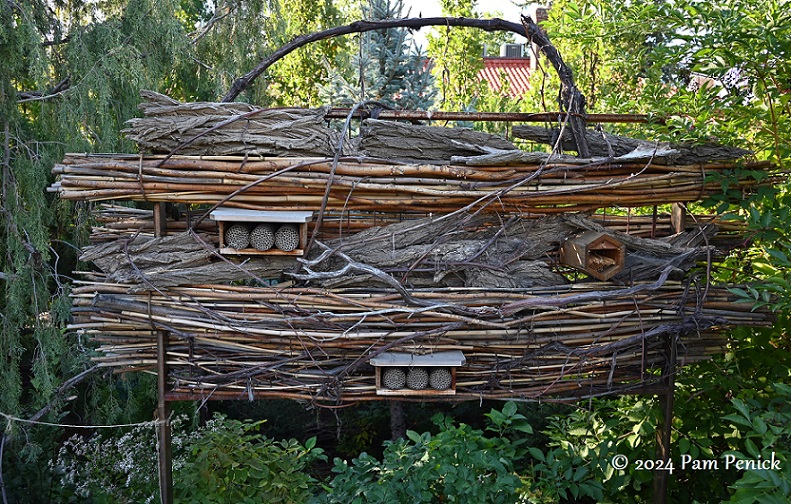
Another one
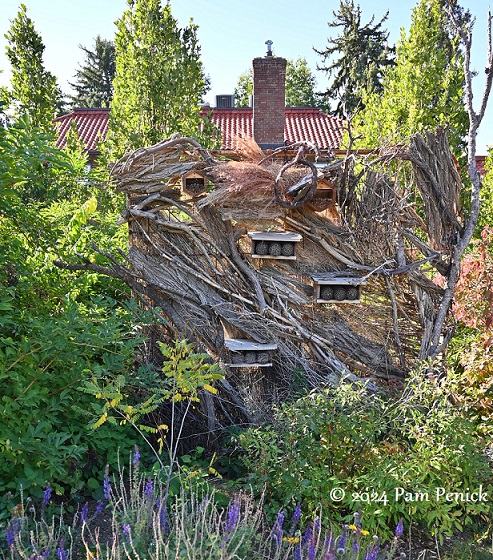
And one more. Feeling inspired to make one of your own this winter?
Up next: The Dwarf Conifer Collection and Rock Alpine Garden at Denver Botanic. For a look back at DBG’s Steppe Garden, ornamental grasses, and woodland garden, click here.
I welcome your comments. Please scroll to the end of this post to leave one. If you’re reading in an email, click here to visit Digging and find the comment box at the end of each post. And hey, did someone forward this email to you, and you want to subscribe? Click here to get Digging delivered directly to your inbox!
__________________________
Digging Deeper
Come learn about gardening and design at Garden Spark! I organize in-person talks by inspiring designers, landscape architects, authors, and gardeners a few times a year in Austin. These are limited-attendance events that sell out quickly, so join the Garden Spark email list to be notified in advance; simply click this link and ask to be added. Read all about the Season 8 lineup here!
All material © 2024 by Pam Penick for Digging. Unauthorized reproduction prohibited.